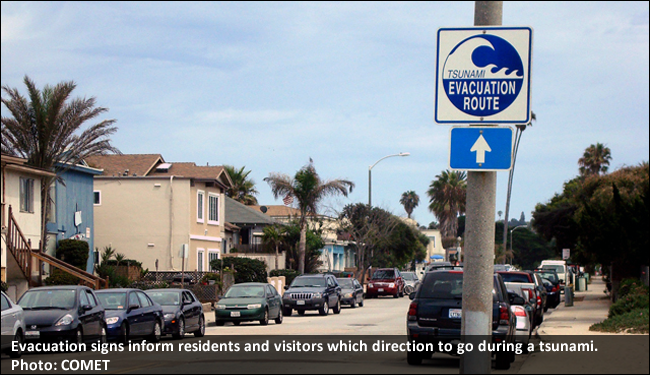Safety
National Program

During a tsunami, dangerous coastal flooding and powerful currents are possible and may continue for several hours or days after initial arrival.
The first wave may not be the last or the largest.
How you respond to a tsunami warning depends on where you are and how you receive the warning. As described in Understand the Warnings, there are two types of tsunami warnings, official and natural. Both are equally important and suggest the potential for a tsunami that may cause widespread flooding. You may not get both types of warnings. Be prepared to respond to whatever you hear or see first. For your safety and others, always follow instructions from local officials.
If you are outside of the tsunami hazard or evacuation zone and you receive an official or natural tsunami warning, a tsunami is possible or likely, but you are in a safe place. Stay where you are unless local officials tell you otherwise.
Official Tsunami WarningIf you are anywhere in a tsunami hazard or evacuation zone or a low-lying coastal area and you receive an official tsunami warning, a tsunami is likely. The warning will estimate the tsunami's arrival time, describe potential impacts and recommend actions to take.
If you are in a tsunami hazard or evacuation zone or a low-lying coastal area and you feel a strong or long earthquake, the ocean acts strange (e.g., it looks like a fast-rising flood or a wall of water or it drains away suddenly, showing the ocean floor like a very low tide) OR there is a loud roar coming from the ocean, a tsunami is possible and could arrive within minutes.
Note: If you are on the beach or near the water and feel an earthquake—no matter how big or how long it lasts—move quickly off the beach to high ground or inland (away from the water) as soon as you can do so safely. Get more information from the sources noted above.
During a tsunami advisory:
During a tsunami watch:
US Dept of Commerce
National Oceanic and Atmospheric Administration
National Weather Service
Safety
1325 East West Highway
Silver Spring, MD 20910
Comments? Questions? Please Contact Us.

